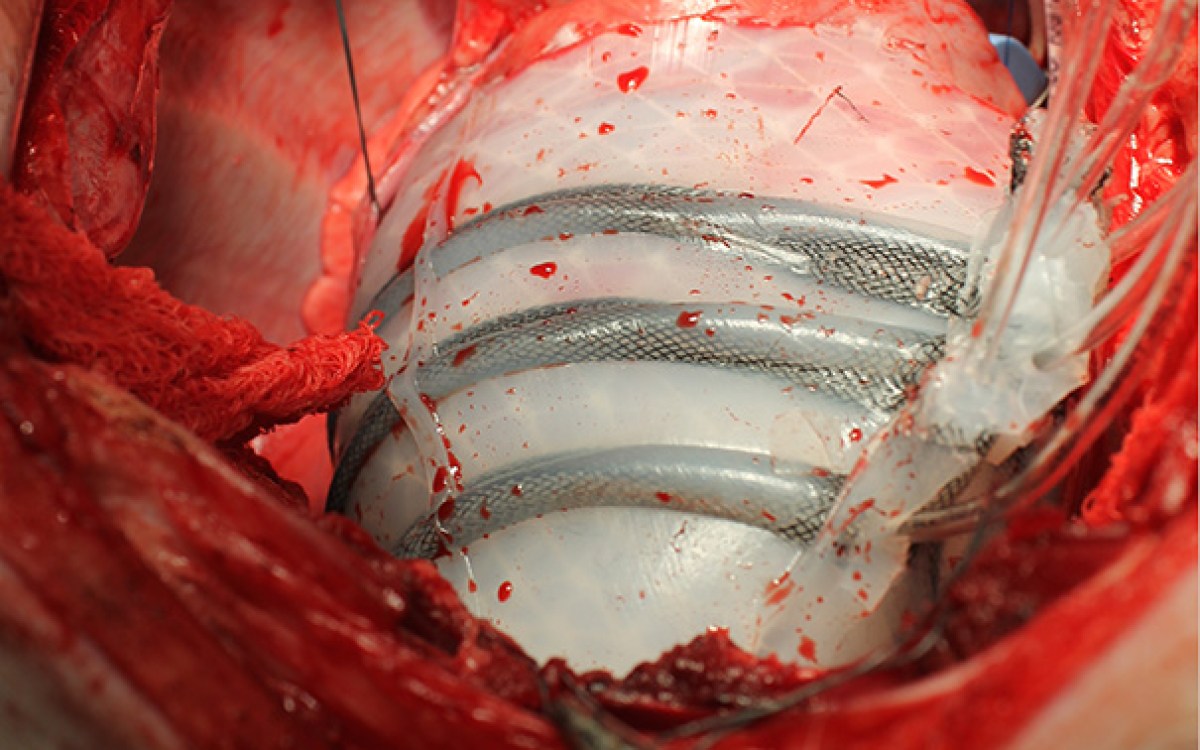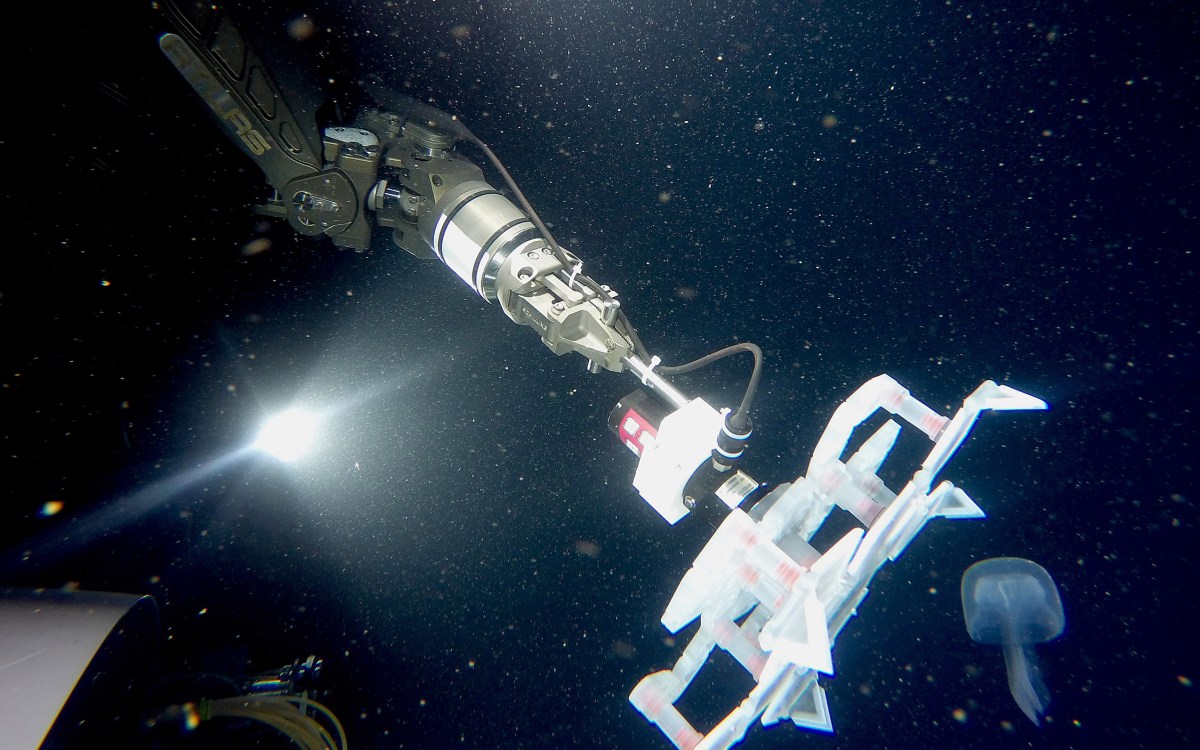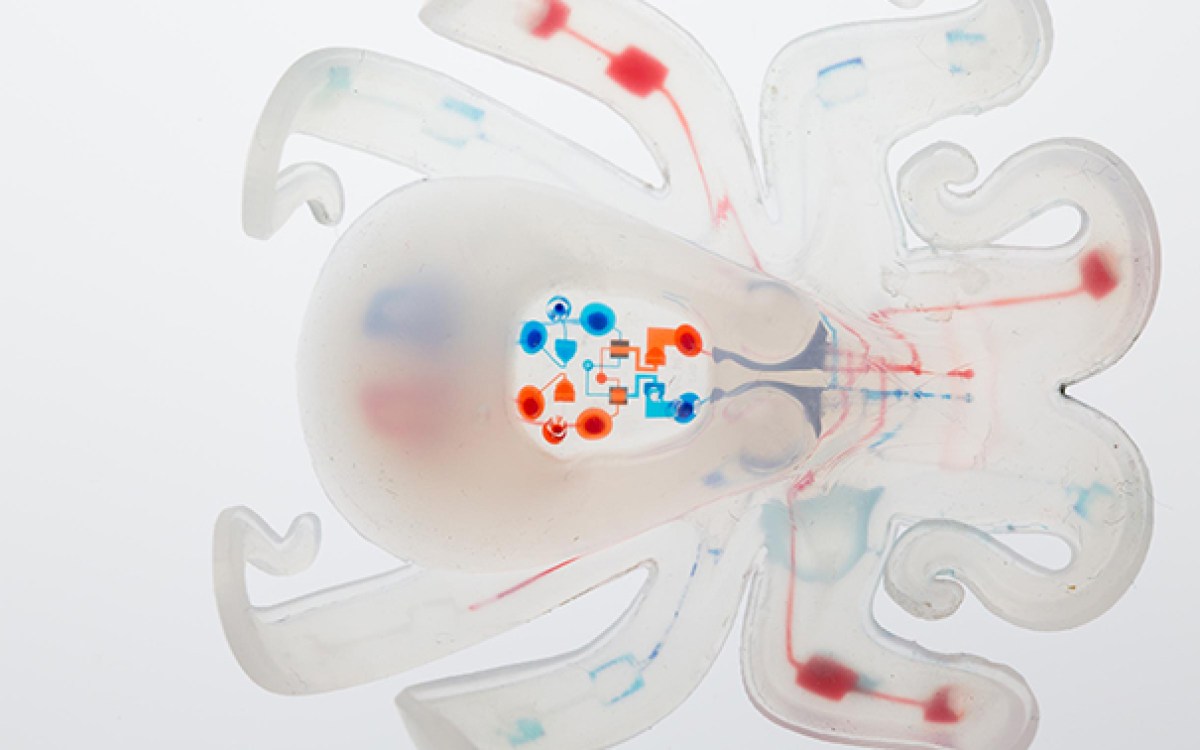Soft robotic arm acts as extension of human hand
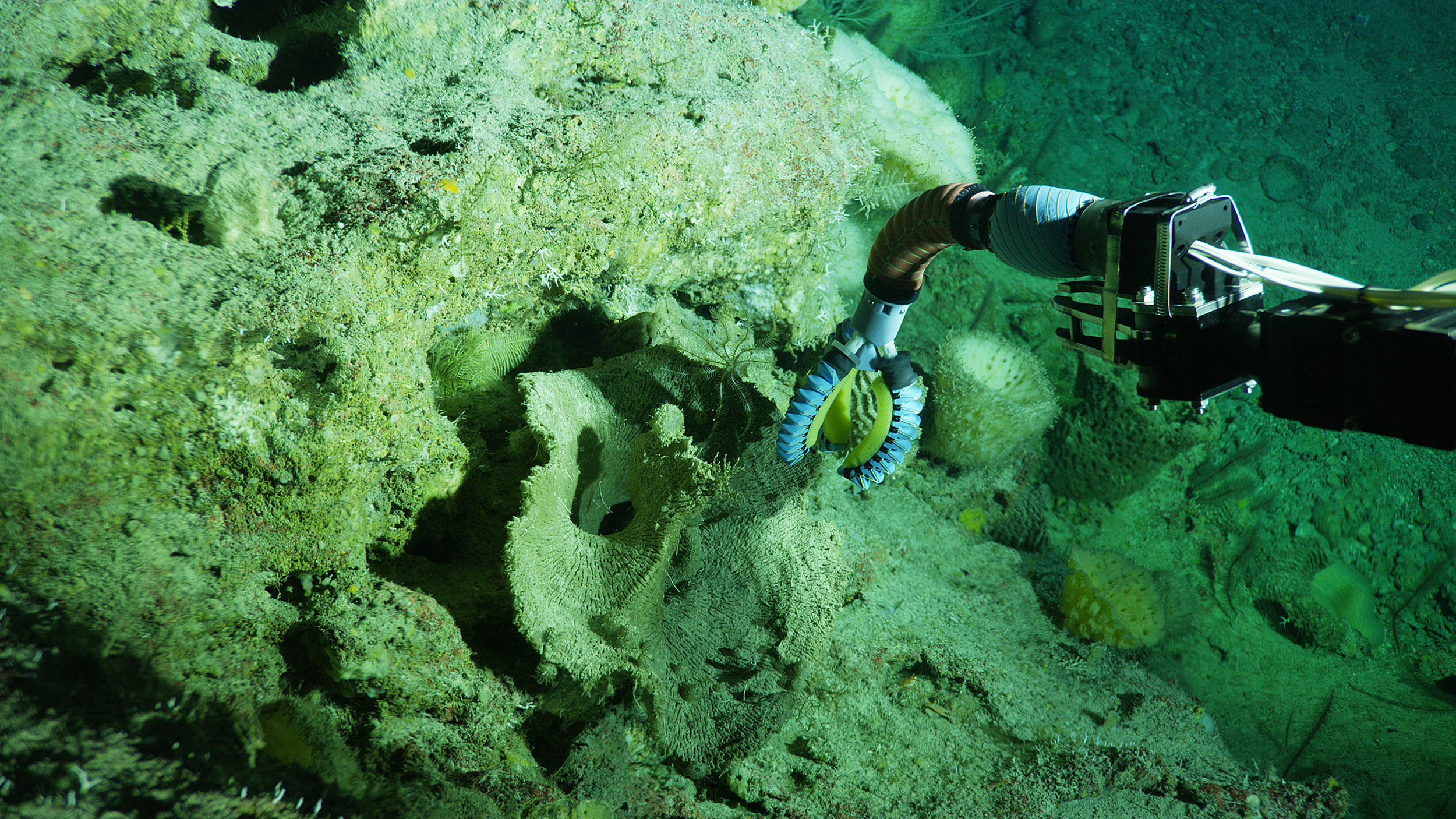
The soft robotic arm has interchangeable modular units that allow it to flex and rotate in response to the hand movements of a human operator wearing a glove equipped with wireless soft sensors.
Credit: David Gruber/Baruch College, CUNY
New device gives deep-sea researchers better dexterity for embracing delicate sea life
The human arm can perform a wide range of extremely delicate and coordinated movements, from turning a key in a lock to gently stroking a puppy’s fur. The robotic “arms” on underwater research submarines, however, are hard, jerky, and lack the finesse to be able to reach and interact with creatures such as jellyfish or octopuses without damaging them.
Previously, the Wyss Institute for Biologically Inspired Engineering at Harvard University and collaborators developed a range of soft robotic grippers to more safely handle delicate sea life, but the devices still relied on hard, robotic submarine arms that were difficult to maneuver into various positions.
Now, a new system built by scientists at the Wyss Institute, Harvard’s John A. Paulson School of Engineering and Applied Sciences (SEAS), Baruch College, and the University of Rhode Island (URI) uses a glove equipped with wireless soft sensors to control a modular, soft robotic “arm” that can flex and move with unprecedented dexterity to grasp and sample fragile creatures. The research is published in Scientific Report.
“This new soft robotic arm replaces the hard, rigid arms that come standard on most submersibles, enabling our soft robotic grippers to reach and interact with sea life with much greater ease across a variety of environments and allowing us to explore parts of the ocean that are currently understudied,” said first author Brennan Phillips, an assistant professor at URI who was a postdoctoral fellow at the Wyss Institute and SEAS when the research was completed.
The apparatus Phillips and his colleagues developed features bending, rotary, and gripping modules that can be added or removed easily to allow the arm to perform different types of movements — a significant benefit, given the diversity of terrain and life in the ocean. Other improvements over existing soft manipulators include a compact, yet robust, hydraulic control system for deployment in remote and harsh environments. The whole system requires less than half the power of the smallest commercially available deep-sea electronic manipulator arm, making it ideal for use on manned undersea vehicles, which have limited battery capacity.
The arm is controlled wirelessly via a glove equipped with soft sensors that is worn by a scientist, who controls the arm by moving his or her wrist and the grippers by curling his or her index finger. Those movements are translated into the opening and closing of various valves in the system’s seawater-powered hydraulic engine. Different types of soft grippers can be attached to the end of the arm to allow it to interact with creatures of varying shape, size, and delicacy, from hard, brittle corals to soft, diaphanous jellyfish.
“The currently available subsea robotic arms work well for oil and gas exploration, but not for handling delicate marine life — using them is like trying to pick up a napkin with a metal crab claw,” said co-author David Gruber, a professor of biology at Baruch College, CUNY, a National Geographic Explorer, and former Radcliffe Institute Fellow (2017-18). “The glove control system allows us to have much more intuitive control over the soft robotic arm, like how we would move our own arms while scuba diving.”
The robotic arm and gripper system was field-tested from a three-person submarine in the unexplored deep-sea ecosystems of the Fernando de Noronha archipelago in Brazil. It was able to interact with or collect mid-water and deep-sea organisms such as a glass sponge, a sea cucumber, a branching coral, and free-floating bioluminescent tunicates. Different modules were quickly and easily swapped into the arm to better maneuver the grippers, or, in the case of any one module being damaged, without needing to dismantle the entire arm.
Brennan Phillips (left) and David Gruber pilot a manned research submarine in the deep sea. Their soft robotic arms could one day allow marine biologists to conduct experiments in submarine-based underwater research labs.
Credit: Brennan Phillips
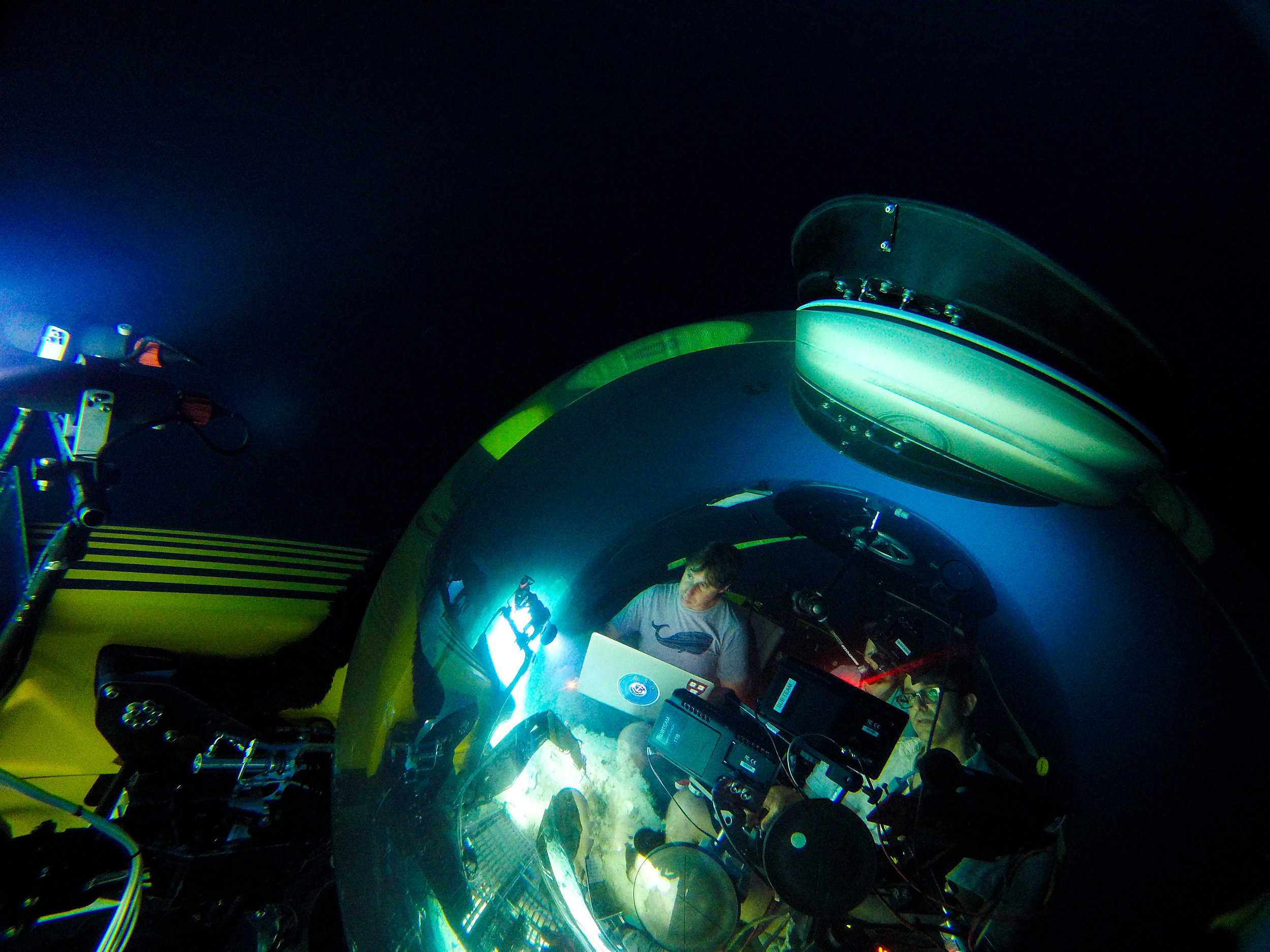
“This low-power, glove-controlled soft robot was designed with the future marine biologist in mind, who will be able to conduct science well beyond the limits of scuba and with a comparable or better means than via a human diver,” said Robert Wood, a senior author of the paper who is a founding core faculty member of the Wyss Institute as well as the Charles River Professor of Engineering and Applied Sciences at SEAS.
The researchers are continuing to refine their designs and are incorporating noninvasive DNA and RNA sampling capabilities into the actuating units of the arm system, with the goal of being able to capture fragile sea creatures, experiment on them in an “underwater laboratory,” and release them unharmed.
Insights from this work could potentially have value for medical device applications as well.
Additional authors of the paper include Kaitlyn Becker, Griffin Whittredge, Daniel Vogt, Clark Teeple, and Michelle Rosen from the Wyss Institute and SEAS; Shunichi Kurumaya from Tokyo Institute of Technology, Japan; and Vincent Pieribone, director of the John B. Pierce Laboratory, professor at the Yale University School of Medicine, and vice chairman of OceanX.
This research was supported by an NSF Instrument Development for Biological Research Award, the National Geographic Innovation Challenge, and OceanX/The Dalio Foundation.



